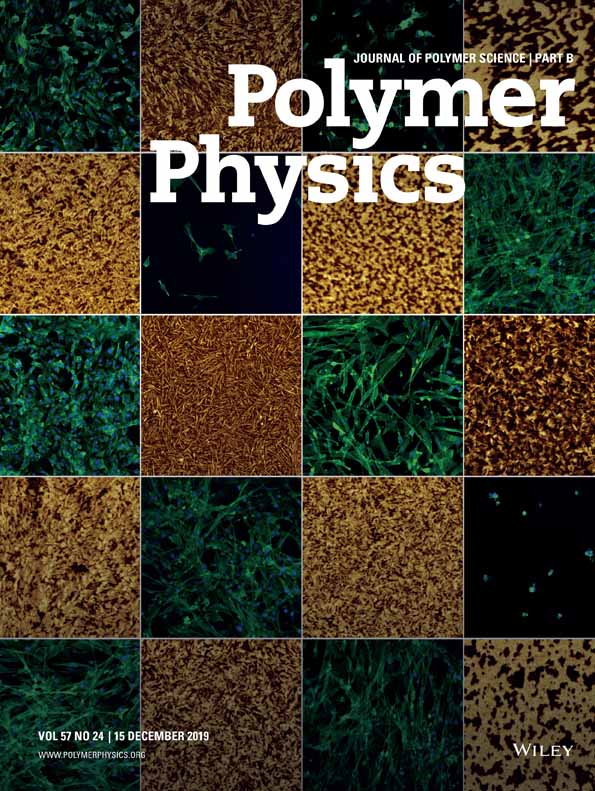Hydration in a new semiaromatic polyamide observed by humidity-controlled dynamic viscoelastometry and X-ray diffraction
Abstract
Hydration in a new semiaromatic polyamide, named polyamide 9-T (PA9-T), a copolymer of terephthalic acid with n- and iso-nonanediamines, is studied by dynamic viscoelastic analysis under controlled humidity conditions and wide-angle X-ray diffraction analysis in comparison with common polyamide nylon 6. The storage modulus of PA9-T is retained at up to 60 °C with increasing humidity, then dropped with further increases in temperature past 70 °C. The decrease in mechanical properties at 70 °C due to moisture uptake is found to be substantially improved by annealing to develop molecular packing and/or crystallization. In contrast, the storage modulus of very highly crystallized (50% crystallinity) nylon 6 decreases markedly with humidity at low temperatures such as 20 °C. Thus, PA9-T retains its mechanical properties in humid atmospheres at much higher temperatures than nylon 6. The crystalline X-ray diffraction peaks for nylon 6 corresponding to (002) + (202) of the α form shift upon absorption of moisture, speculated to be due to the weakening of hydrogen bonds and the subsequent conformational disordering of the chains. Unlike nylon 6, the crystalline peaks of PA9-T do not shift due to moisture uptake. This is considered to be attributable to that the long aliphatic chain in PA9-T forms the large hydrophobic domain, rendering PA9-T less hygroscopic than nylon 6. Additionally, strong hydrogen bonds formed by terephthalamide residues together with a strong stacking force of phenylene groups may also repel water, preventing moisture bind with the amide groups of PA9-T crystals. © 2005 Wiley Periodicals, Inc. J Polym Sci Part B: Polym Phys 43: 1640–1648, 2005




